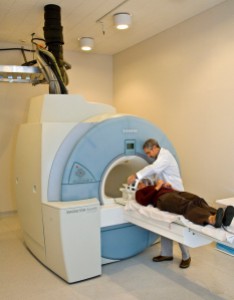From the 10th to the 14th of April 2017 researchers from the UK’s flagship project on companion animal surveillance, the Small Animal Veterinary Surveillance Network (SAVSNET), set up shop at Edinburgh’s international science festival.
SAVSNET* uses big data to survey animal disease across the UK and ultimately aims to improve animal care through identification of trends in diseases observed by veterinary practitioners.
This work offers huge benefits for companion animals, meaning that interventions can be targeted towards those most at risk and risk factors for disease can be identified across the population.
There is also significant crossover between this work and that of human health data science. Indeed, lessons learned from the processing and analysis of big data from vets may be used to inform aspects of human data analysis while work on shared and zoonotic diseases, antibacterial use and resistance also offer significant benefit to human health.
So, for this week, we took our science to the public to engage, inspire, raise awareness and stimulate discussion about our work.

The SAVSNET Liverpool team worked hard to develop a wide range of activities designed to bring data science to life and to raise awareness of their work while Dr Sarah Fox, from HeRC’s PPI team joined the fun to expand discussions beyond pets and into the realms of human health.
Our stall was designed to take the public on a data journey, a journey which began with our resident mascots Alan, Phil and PJ, who were suffering from a parasitic problem. Hidden in our fluffy friend’s fur were a host of unwanted passengers – ticks (not the real thing but small sticky models we used to represent real ticks). Visitors helped us to remove these pests from our mascots and learned that every time this process is performed by a vet, a medical record is created for that procedure. Indeed, vets across the country are regularly called upon to remove such pests and, assuming the practice is signed-up to the SAVSNET system, information on these procedures is transferred to data scientists.
The next stage of our data journey is one health researchers are very familiar with but which may remain a mystery amongst the general public – sorting and analysing these records.

Our stall was equipped with a large touch-screen PC, linked to the SAVSNET database and programmed to pull out and de-identify all vet records which made reference to the word tick. It was explained that, in order to perform a complete analysis of the prevalence of ticks across the UK, data scientists needed to manually sort through these selected records and confirm the presence or absence of a tick at the time of the recorded consultation. Now visitors to our stall could take part in their own citizen science project as they helped us to sort through these records, uncovering ticks and adding their findings to our maps of regional and seasonal tick prevalence. Dogs came up trumps as the pet most likely to visit their local vet to have ticks removed, while the ticks themselves seemed to indiscriminately pop up all around the UK (even in the centre of London) while also having a preference for outings during the warmer summer months.
In the final stage of our data journey, visitors had the chance to get hands-on with some data science theory.

Dr Alan Radford, a reader in infection biology from the University of Liverpool, developed a novel way of exploring sample theory and odds ratios using wooden building blocks.
This activity consisted of hundreds of wooden blocks sporting either cat or dog stickers, a subsection of which also housed a smaller tick sticker (on their rear). Visitors were told that these blocks represented all the information available on cats and dogs in the UK. After conceding that they would not be able to count all of these blocks independently, visitors were encouraged to form groups and choose a smaller sub-sample of ten blocks each. Visitors counted how many of their chosen ten blocks showed cat stickers and how many showed dog stickers. As a rule most groups of ten contained more dogs than cats – since overall there were more dog blocks in the total population. However, inevitably we also saw variability and some individuals chose more cat blocks than dogs. This tactile and visual example of sample theory allowed a discussion regarding sample bias and how increasing the number or size of samples taken would bring you closer to the correct population value. Finally visitors were asked to turn their blocks around and count how many of their dogs and cats also had ticks. In our example cats were more likely to house a resident parasite but, with fewer cats to sample from, this was not always immediately obvious. Specifically, assuming a visitor chose 7 dog blocks and 3 cat blocks then found that 4 of their dogs had ticks while only two of their cats did, they might be forgiven for thinking that within our sample dogs were more prone to ticks. However, from this data our older visitors were taught how to calculate an odds ratio, which could show that our cats were actually more likely to house ticks than dogs. It was also noted that similar calculations are often used to calculate risk in medical studies and that it is often these vales which are reported in the media.

Alongside our data blocks, younger visitors also had the chance to get up close and personal with real life ticks, through both a colouring exercise and by peeking down our microscope at a range of preserved specimens.
Finally, we discussed how tick data and similar veterinary information could be used to improve the health of companion animals and to better understand disease outbreaks across the country. It was at this point we also introduced the idea that similar methods could also be applied to human health data in order to streamline and improve our healthcare services. Our discussions centred around the successes already shown in The Farr Institute for Health Informatics’ 100 Ways case studies and HeRC’s work, including improvements in surgical practice and regional health improvements from HeRC’s Born in Bradford study – whilst also engaging in a frank discussion around data privacy and research transparency. Visitors were encouraged to document their views on these uses of big data on our post-it note wall, garnering comments to the questions: “What do you think of big data?” and “Should we use human data?” A majority of visitors chose to comment on our second question, generally expressing positive feelings concerning this topic but, with many also noting the need for tight data privacy controls. Comments of note include:
Should we use human data?
Yes, but with controls and limited personal info
We need to get better at persuading people to change behaviour and ask the right questions to collect the right data.
Yes, it’s towards a good cause and can help people.
Using data is a good idea if it helps to make people better.
Yes, as long as there are sufficient controls in place.
Yes, but don’t sell it.
Yes, if you are careful not to breach privacy.

Overall we had a great time at the festival and hope everyone who visited out stall took away a little bit of our enthusiasm and a bit more knowledge of health data science.
* co-funded by the BBSRC and in collaboration with the British Small Animal Veterinary Association (BSAVA) and the University of Liverpool.
Post by: Sarah Fox
Save
Save
Save







 Mike is currently studying for a PhD in neuroinflammation at the the University of Manchester, UK. His work is based mainly on the role of a huge protein complex called the inflammasome in diseases such as Alzheimer’s, stroke and haemorrhagic fever. When he’s not in the lab he’s usually found up a mountain or out in the countryside somewhere and is always on the lookout for any new science outreach ideas!
Mike is currently studying for a PhD in neuroinflammation at the the University of Manchester, UK. His work is based mainly on the role of a huge protein complex called the inflammasome in diseases such as Alzheimer’s, stroke and haemorrhagic fever. When he’s not in the lab he’s usually found up a mountain or out in the countryside somewhere and is always on the lookout for any new science outreach ideas! In collaboration with Manchester European City of Science, the non-profit organisation Invisible Dust have commissioned the artist Kasia Molga to create a show in the streets of Manchester that brings this issue out into the open. Called the ‘Human Sensor’, dancers will wear futuristic suits that light up in different colours depending on what they are breathing, making tangible the effects of poor air quality.
In collaboration with Manchester European City of Science, the non-profit organisation Invisible Dust have commissioned the artist Kasia Molga to create a show in the streets of Manchester that brings this issue out into the open. Called the ‘Human Sensor’, dancers will wear futuristic suits that light up in different colours depending on what they are breathing, making tangible the effects of poor air quality. This year the Manchester branch of the British Science Association launched it’s first ever science journalism competition. They presented AS and A-level students across Greater Manchester with the daunting task of interviewing an academic researcher then using this material to create an article accessible to someone with no scientific background. This was by no means a simple task, especially since many of the researchers were working on basic research – the type of work which may not be sensational but which represents the real ‘nuts and bolts’ of scientific research and without which no major breakthroughs would ever be made. Despite the challenges implicit in this task all our entrants stepped up and we were astounded by the quality of work submitted.
This year the Manchester branch of the British Science Association launched it’s first ever science journalism competition. They presented AS and A-level students across Greater Manchester with the daunting task of interviewing an academic researcher then using this material to create an article accessible to someone with no scientific background. This was by no means a simple task, especially since many of the researchers were working on basic research – the type of work which may not be sensational but which represents the real ‘nuts and bolts’ of scientific research and without which no major breakthroughs would ever be made. Despite the challenges implicit in this task all our entrants stepped up and we were astounded by the quality of work submitted. 






 While here in the city we think mostly of the effect the haze and land burning has on us but it’s not just people that are affected. Indonesia is one of the most bio-diverse countries on the planet, most famously home to Orangutans. Destruction of the forests doesn’t just pollute their air, it also destroys their homes. According to online sources, up to 5000 already endangered Orangutans are killed every year through the destruction of their habitat for palm oil productions
While here in the city we think mostly of the effect the haze and land burning has on us but it’s not just people that are affected. Indonesia is one of the most bio-diverse countries on the planet, most famously home to Orangutans. Destruction of the forests doesn’t just pollute their air, it also destroys their homes. According to online sources, up to 5000 already endangered Orangutans are killed every year through the destruction of their habitat for palm oil productions
You must be logged in to post a comment.